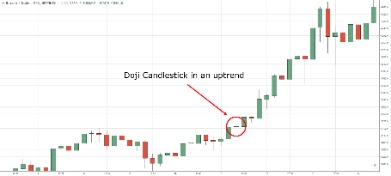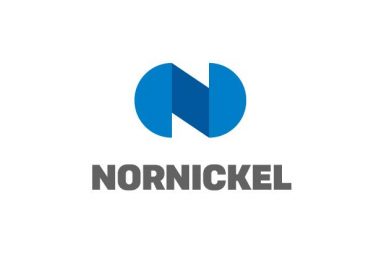CYCLICAL STOCK English meaning
CYCLICAL STOCK English meaning
Content

How do you know when a stock is going to rise, and when it is going to fall? If there were a single, definitive answer, all investors would be billionaires. While all stocks are affected by the moves of the stock market itself, there are a host of other influences — from a company’s own fundamentals to the economy overall. Cyclical stocks are common in the industries that provide products and services that are considered non-essential.

Cyclical industry products are in demand when the economy does well, but fall out of favor when times are tough or household budgets are strained. However, there’s no way to know for sure when the economy is about to take a turn. Buy and hold investors may want to keep cyclical stocks as a regular part of their portfolios in the hopes that the higher returns during good economic times offset the lower returns during downturns.
Benefits to Investing in Cyclical Stocks
While we strive to provide a wide range offers, Bankrate does not include information about every financial or credit product or service. Fidelity also offers industry-specific consumer cyclical ETFs, such as those invested in automotive or construction portfolios. A recession can be explained as a significant decline in economic activity over a period of… Karl Montevirgen is a professional freelance writer who specializes in the fields of finance, cryptomarkets, content strategy, and the arts. Karl works with several organizations in the equities, futures, physical metals, and blockchain industries.
Cyclical stocks can offer investors an opportunity for growth during periods of economic expansion. As the economy grows, so too does demand for products and services offered by cyclical industries. However, during economic downturns, consumers may cut back on spending, which can negatively impact cyclical stocks. You might think that most businesses suffer during economic slowdowns, but there are some that seem to plod ahead no matter the macroeconomic environment.
While we adhere to strict
editorial integrity,
this post may contain references to products from our partners. The offers that appear on this site are from companies that compensate us. But this compensation does not influence the information we publish, or the reviews that you see on this site. We do not include the universe of companies or financial offers that may be available to you. A stock is considered to be defensive when the company is able to pay out dividends…
What are stock buybacks and why do companies use them?
When the economy is doing well, people can afford to buy new cars, upgrade their homes, shop, and travel. The opposite of a cyclical stock is a non-cyclical or defensive stock. Companies with defensive stocks are not as sensitive to the ups and downs of the economy. Their shares have produced consistent https://g-markets.net/helpful-articles/the-5-different-types-of-doji-candlestick-patterns/ returns and paid regular dividends over decades. Moreover, you can analyse the trend of their stock market performance by comparing it with business cycles and see how they align. Non-cyclical stocks come from the industries that are producing essentials, such as pharmaceuticals and the defence sector.
They provide safety, but they are not going to skyrocket in price when the economy grows. Cyclical industries make or sell products that we can live without or delay buying when times are tough. Examples include luxury goods, non-business travel, and new construction. Defensive stocks are usually found in sectors that provide for basic needs, such as food and other consumer staples, utilities, healthcare, and discount products. The common denominator of cyclical companies is that they produce goods and services that are considered non-essential. They may be on the luxury side (high-end retail, entertainment) or the less-glam side (building materials, auto parts).
Company-Specific Risk
A good time to rotate out of cyclical stocks tends to be at the end of a run of strong economic performance. Some indicators to watch are a flattening yield curve and a levelling off of industrial production. Historically speaking, this stage of the economic cycle (late recovery) is a period of strong performance for energy and consumer staples stocks.
Diverse portfolios will carry a blend of cyclical and non-cyclical stocks. Consumer staples stocks come from companies that produce goods that are essential for consumers—products such as toilet paper, food, soap, or clothing. Where consumer cyclicals are considered offensive stocks, consumer staples are seen as defensive for portfolios because demand for their products is likely to be consistent through market downturns. If you’re a passive investor with a strategy centered on a 60/40 stocks-to-bonds portfolio, and the stocks consist mainly of index funds, cyclical and defensive stocks might not be top of mind.
We also respect individual opinions––they represent the unvarnished thinking of our people and exacting analysis of our research processes. Our authors can publish views that we may or may not agree with, but they show their work, distinguish facts from opinions, and make sure their analysis is clear and in no way misleading or deceptive. In this piece, we will take a look at the 15 best cyclical stocks to buy now. For more stocks, head on over to 5 Best Cyclical Stocks to Buy Now.
- They’re more likely to take a vacation, buy a new house, or go out to eat.
- Some good cyclical stock examples include General Motors, Nike, JP Morgan, and Starbucks.
- In addition to the disclaimer below, the material on this page does not contain a record of our trading prices, or an offer of, or solicitation for, a transaction in any financial instrument.
- Consumers may simply favour cheaper alternatives during these periods.
Some examples of cyclical industries include technology, consumer discretionary, and materials. Understanding cyclical stocks is important for investors because these stocks can be highly volatile and carry a higher level of risk than other types of stocks. Cyclical companies are companies that are sensitive to economic cycles.
Two of the sectors, consumer staples and utilities, are noncyclical stocks. The rest are cyclical, although different sectors will show higher or lower levels of volatility, thus making some moderately cyclical and some highly cyclical. The stock prices of cyclical and noncyclical stocks relate to how the business cycle changes. Cyclical stocks move more dramatically, both up and down, with the cycle.
How Do Consumer Cyclicals Work
This would mean for every 10% move in the underlying benchmark, the stock would have moved by 15%. This means they follow the ups and downs of the economy as a whole – becoming profitable during periods of prosperity and inactive during downturns. To compensate for cyclical effects, you can use average earnings over at least 10 years. You should also use the long-term average growth rate, rather than extrapolating the current growth rate into the future. Our experts have been helping you master your money for over four decades.
If an investor were to invest primarily in cyclical stocks, their returns might look good when the economy is thriving, but they might suffer declines when the economy turns downward. In a perfect world, the best investment strategy would be to buy cyclical stocks at the start of an economic expansion and to sell them just before a recession. But trying to predict the timing of a future recession or expansion is a losing battle. Cyclical stocks represent companies that make or sell discretionary items and services that are in demand when the economy is doing well. They include restaurants, hotel chains, airlines, furniture, high-end clothing retailers, and automobile manufacturers. These are also the goods and services that people cut first when times are tough.

These three examples show that every cyclical stock runs on its own timetable – emphasising the importance of technical and fundamental analysis, and remaining up to date on recent news. Cyclical stocks’ earnings per share (EPS) can vary significantly from quarter to quarter because their profit and loss is so sensitive to economic health. Cyclical stocks differ from non-cyclical ones in how leveraged they are to the economic cycle. The largest healthcare firms, for example, health insurer UnitedHealth and pharmacy chain CVS Health, will on the whole be relatively unaffected by broader economic conditions.
Many of these stocks are also considered consumer essential stocks and can include shipping and transportation and insurance company stocks. Another characteristic of the more defensive stocks is that they also tend to pay consistent dividends and have stable earnings, even in challenging economic periods. Companies in the cyclical category are more sensitive to the ebb and flow of customer spending, from discretionary purchases to the materials that manufacturers need to produce discretionary goods. When customers begin saving rather than spending, cyclical stocks tend to get hit. Cyclical Stocks are publicly traded securities characterized by share prices that fluctuate along with the prevailing macroeconomic conditions and business cycles.
- Non-cyclical stocks, which are also known as defensive stocks, are those that are less sensitive to the business cycle.
- Portfolio risk and volatility can also be reduced by allocating to more defensive investment funds like factor investing funds and hedge funds.
- This requires careful monitoring of economic trends and the stock market, as well as a willingness to hold onto investments for a longer period of time.
- This information has been prepared by IG, a trading name of IG Markets Limited.
- Beyond that, their performance will depend on whether or not the global economy continues to grow, and on whether interest rates rise significantly or not.
A non-consumer cyclical would be a company that sells to businesses, governments, or large organizations and which is also sensitive to the state of the economy. A consumer cyclical would be a cyclical stock that markets to individuals or households. The terms cyclical and non-cyclical refer to how closely correlated a company’s share price is to the fluctuations of the economy. Cyclical stocks and their companies have a direct relationship to the economy, while non-cyclical stocks repeatedly outperform the market when economic growth slows. Services is a separate category of cyclical stocks because these companies do not manufacture or distribute physical goods. Instead, they provide services that facilitate travel, entertainment, and other leisure activities for consumers.
What are the risks of investing in cyclical stocks?
Ultimately, a company’s performance will depend on the markets it operates in, not necessarily the country where it is located. Commodity producers for example, are closely tied to China’s economy, though they operate around the world. Some well-known cyclical stocks have broken 20-year resistance levels, while others are emerging from decade long trading ranges. Spread bets and CFDs are complex instruments and come with a high risk of losing money rapidly due to leverage. 71% of retail investor accounts lose money when spread betting and/or trading CFDs with this provider. You should consider whether you understand how spread bets and CFDs work and whether you can afford to take the high risk of losing your money.


